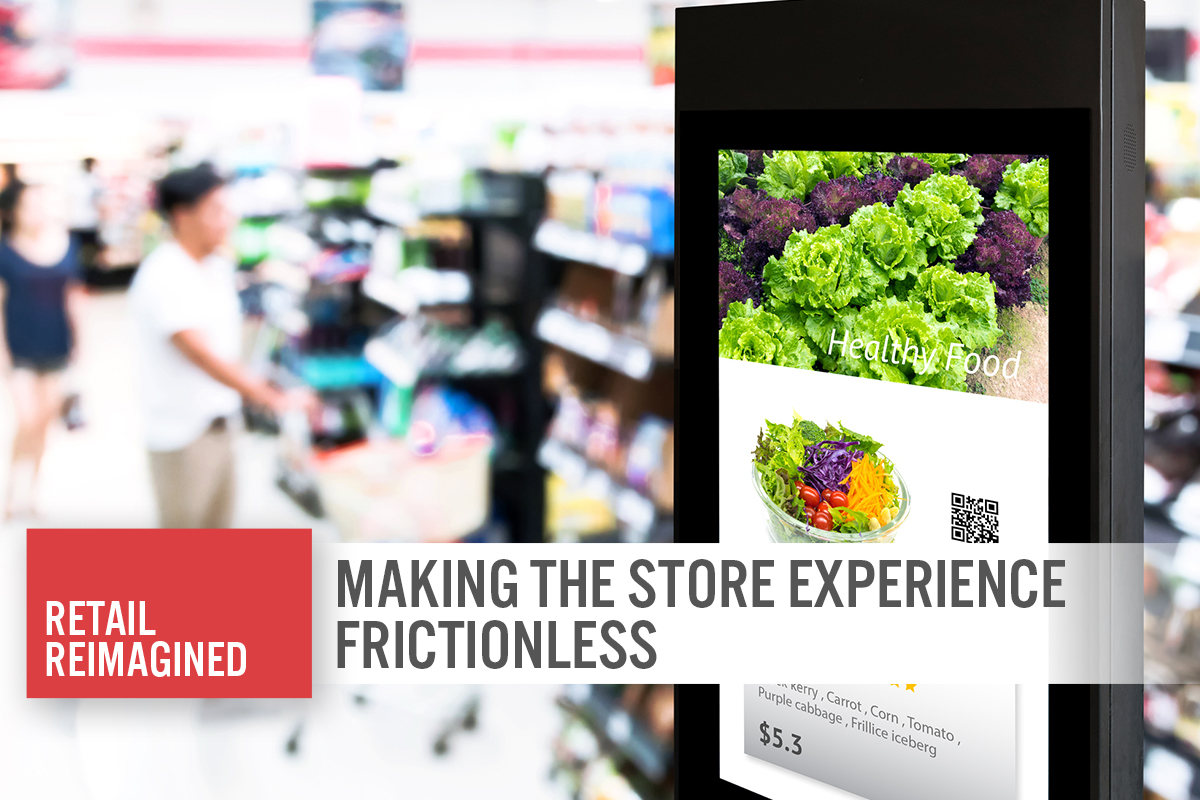
albert Chan
What’s the Story?
Covid-19 has changed consumer behavior, and retailers and brands will need to actively respond to such changes. The crisis has also changed how firms operate, prompting them to be more agile and lean, as well as adopting new channels, services and ways of selling.
In our Retail Reimagined series, we offer a thematic outlook to the post-crisis world, identifying and discussing key retail trends that are likely to prevail and exploring how retail may be reimagined in response to shifts in demand and supply.
[caption id="attachment_113523" align="aligncenter" width="700"] Source: Coresight Research[/caption]
Source: Coresight Research[/caption]
In this Retail Reimagined report, we highlight frictionless and integrated shopping in stores that puts technologies such as self-guided scanning, AR and VR at the forefront.
Why It Matters
We foresee that digital will touch every step of the customer journey, with retailers increasingly recognizing the importance of frictionless in-store experiences in driving sales. Technologies that facilitate a seamless shopping journey include self-guided scanning—such as scanning products using smartphones to access further details or for checkout. With such technology also offering contact-light retail in the wake of the Covid-19 crisis, we expect its adoption to continue to gain traction—which we will discuss in future Retail Reimagined reports.
Other technologies for frictionless shopping are AR and VR, which allow consumers to virtually try on apparel or beauty products, digitally place furniture into specified environments for product visualization, or experience products in store. The reality technology market as a whole was expected to reach $18.8 billion in 2020, according to pre-coronavirus projections by Statista. We expect that the crisis will further expand AR/VR applications as retailers look for ways to alleviate consumer concerns around safety in stores. For example, Macy’s has increased its use of virtual tools to engage with shoppers.
If technology can provide an effective virtual alternative to the physical trying-on experience, this would remove the need for sanitizing and restocking tried-on items, as well as reducing the significant expense to the retailer of receiving and processing items returned due to sizing issues.
The use of AR/VR during temporary store closures amid the Covid-19 crisis was part of the emergence of experiential e-commerce—in which consumers can experience products digitally and remotely, removing the need to visit a brick-and-mortar store. However, with stores being reopened, the tech will still be relevant: The popularity of AR/VR in e-commerce will further prompt offline stores to adopt it faster and with innovative applications. To drive traffic to physical retail locations post pandemic, stores are evolving to offer more engaging experiences—such as through gamification—and reality technologies will play a role in this.
Looking Beyond the Crisis
In the post-crisis world, we expect that there will be accelerated demand for frictionless shopping. Brick-and-mortar stores will need to launch innovative initiatives to facilitate this, which will put technologies such as self-guided scanning and reality technologies at the forefront.
Self-Guided Scanning Will Continue To Gain Traction
We will likely see brands and retailers further bridge digital and in-store experiences into a seamless customer journey, through which digital will touch every step. Brands and retailers will enable consumers to use their mobiles to scan for anything, from buying furniture to finding the right size for clothing.
At IKEA’s new store in Shanghai, which opened on July 23, 2020, consumers can scan a barcode on the product to access item details, such as dimensions and specifications. Although this is not an especially new concept, we think that IKEA is likely to be in the vanguard of a new wave of adoption of this kind of service, including via QR codes. IKEA shoppers can also directly place an order through their smart devices by scanning a product’s code.
[caption id="attachment_113922" align="aligncenter" width="550"]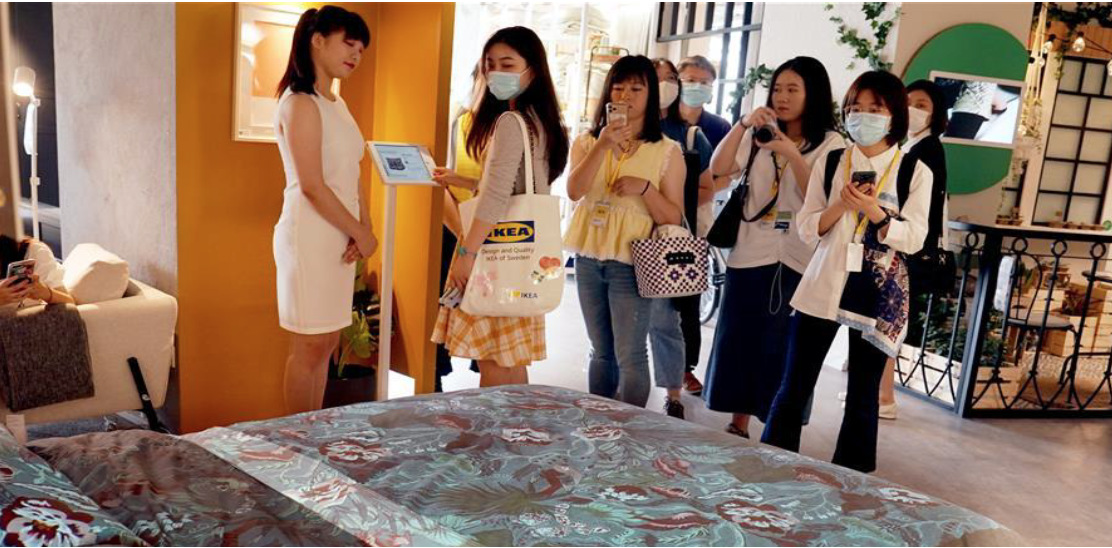 Source: Weibo[/caption]
Source: Weibo[/caption]
At IKEA’s new store, shoppers can select designs for furniture such as wardrobes, sofas and cabinets on digital screens. The technology will then save the appropriate QR codes for the customer’s designs to display a 3D view of a whole-house scene that contains their selected furniture.
[caption id="attachment_113923" align="aligncenter" width="550"]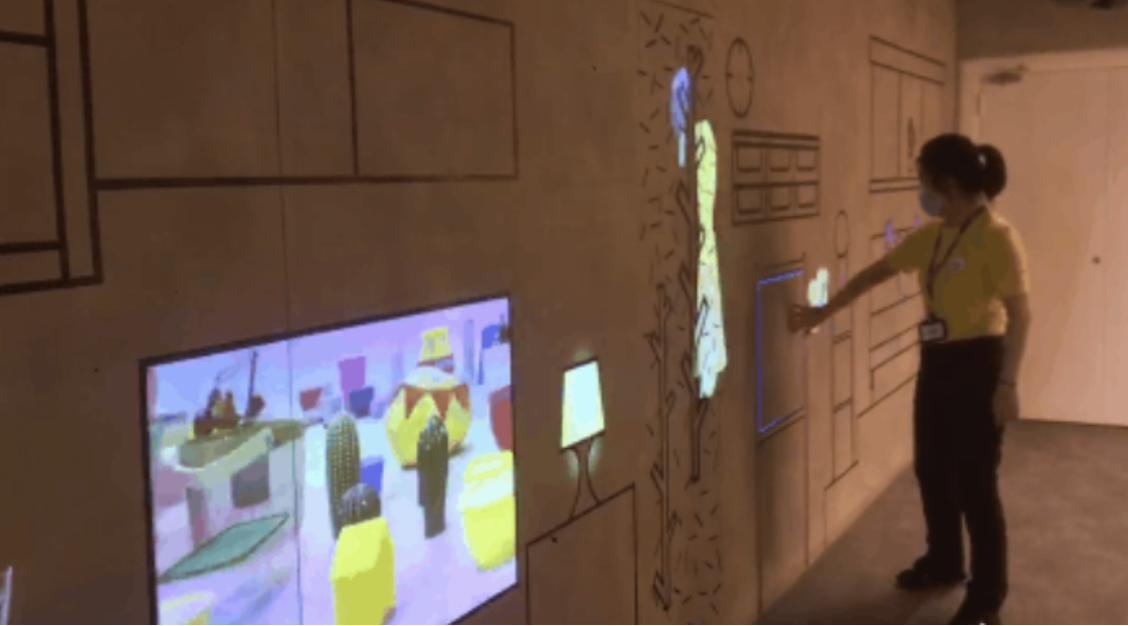 Source: Weibo[/caption]
Source: Weibo[/caption]
Virtual Dressing Rooms Further Help To Remove Barriers to Purchase
We expect that brands and retailers will adopt virtual dressing rooms to help customers to make purchasing decisions and thus drive conversion. Such technology also aligns with post-crisis consumer attitudes—around 49% of millennial consumers and 71% of baby boomers said that they would not feel safe trying on clothes in dressing rooms after the pandemic, according to research company First Insight.
Real-estate company Brookfield Properties recently announced the nationwide rollout of fitting technology through FIT:MATCH studios across the US, which will have begun in three cities—Chicago, Dallas and Los Angeles—by mid-September. The consumer can browse and purchase items via digital touchscreens in the FIT:MATCH studio.
Each consumer is asked a couple of questions about fit preferences before being scanned; the technology captures 150 data points from the user’s body in about 10 seconds. This data is then processed using artificial intelligence (AI) to determine the best clothing fit for the individual. The user receives a unique FITCH ID and a link to a personalized apparel selection from participating brands. Recommended items have a 90% or greater likelihood of being a good fit, according to FIT:MATCH. Over time, data built up about the user’s fit and style preferences ensure that recommendations continuously improve.
[caption id="attachment_113925" align="aligncenter" width="550"]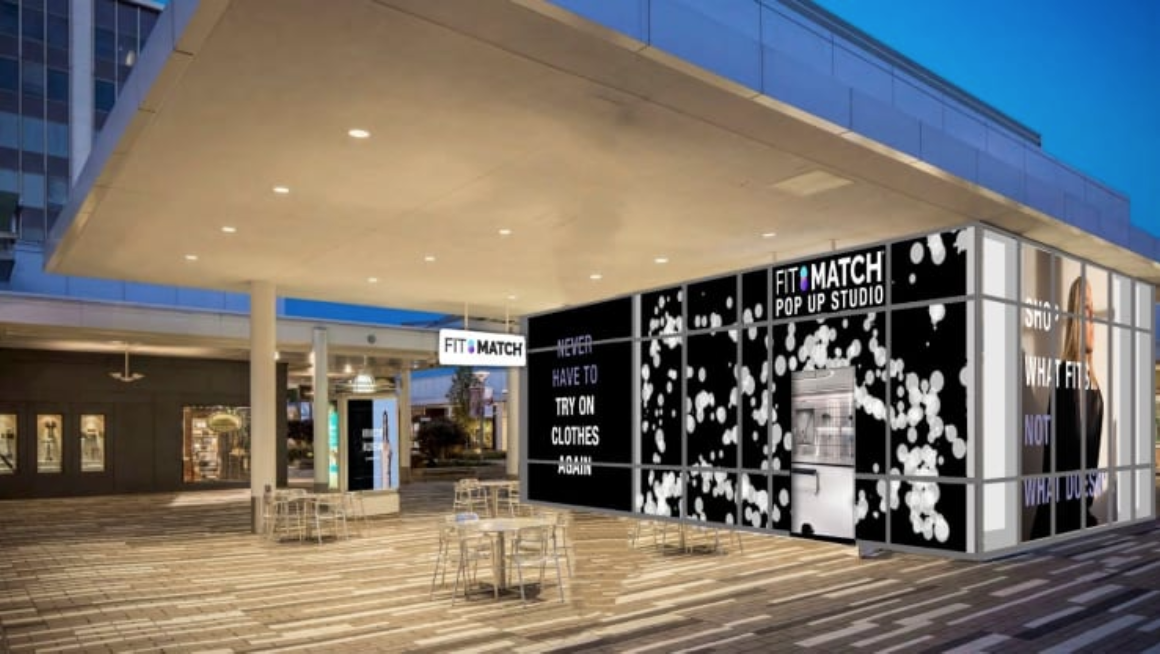 Source: FIT:MATCH[/caption]
Source: FIT:MATCH[/caption]
Frictionless Shopping Experiences amid the Crisis
During the pandemic, consumers participated in self-guided scanning as part of the shopping process, to help them keep a safe distance and reduce contact with others. They also became familiar with using AR and VR to try on or experience products virtually.
Self-Guided Scanning and Sizing with 3DLOOK
Mobile body scanning and fitting company 3DLOOK enabled consumers to use their phones to scan and find out the right size they need in store. A customer scans a QR code on their smartphone upon entering a store, then the customer is prompted to enter a side-view photo and a front-facing photo of themselves. The technology later provides sizing recommendations, specific to different brands, for each product category.
[caption id="attachment_113926" align="aligncenter" width="550"]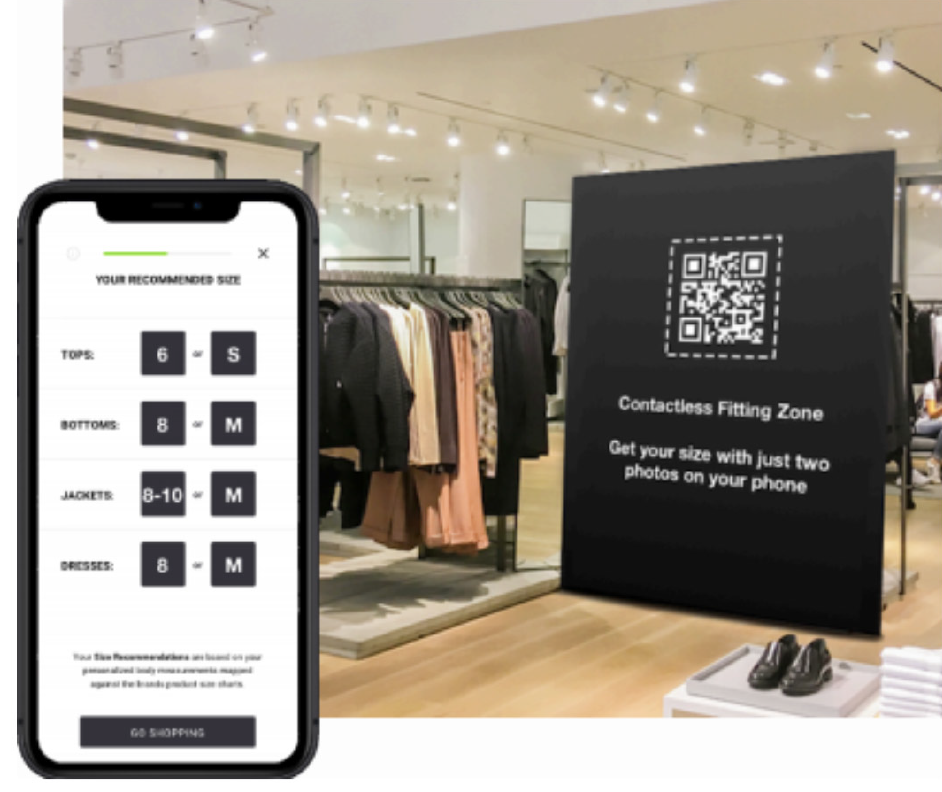 Source: 3DLOOK[/caption]
Source: 3DLOOK[/caption]
3DLOOK’s Co-Founder Whitney Cathcart said that in addition to helping customers to feel safe in stores, this mobile-first technology offers two advantages to retailers:
- By offering sizing recommendations to individual consumers, returns are likely to be reduced, so retailers can gain better control of their inventory.
- The technology provides the retailer with increased and granular customer data—giving them an understanding of their customers’ body shapes and sizes.
Digital Dressing Rooms and Virtual Try-on Drive Conversion
Forma, a California-based virtual try-on technology company, has seen the number of new users of its app double week over week during the coronavirus pandemic, CEO and Co-Founder Benjamin Chiang told Coresight Research on April 23, 2020. The app enables consumers to “try on” thousands of fashion items by uploading a photo of themselves onto which apparel is digitally overlaid. Approximately 20% of the fashion items featured on the app are available for sale, which shoppers can purchase by clicking through to the associated retail website. Chiang highlighted that consumer desire for fashion remained strong even when access to physical stores was cut off due to the coronavirus pandemic: Users spent 50% more time on the Forma app and tried on almost double as many outfits per user.
[caption id="attachment_113927" align="aligncenter" width="550"]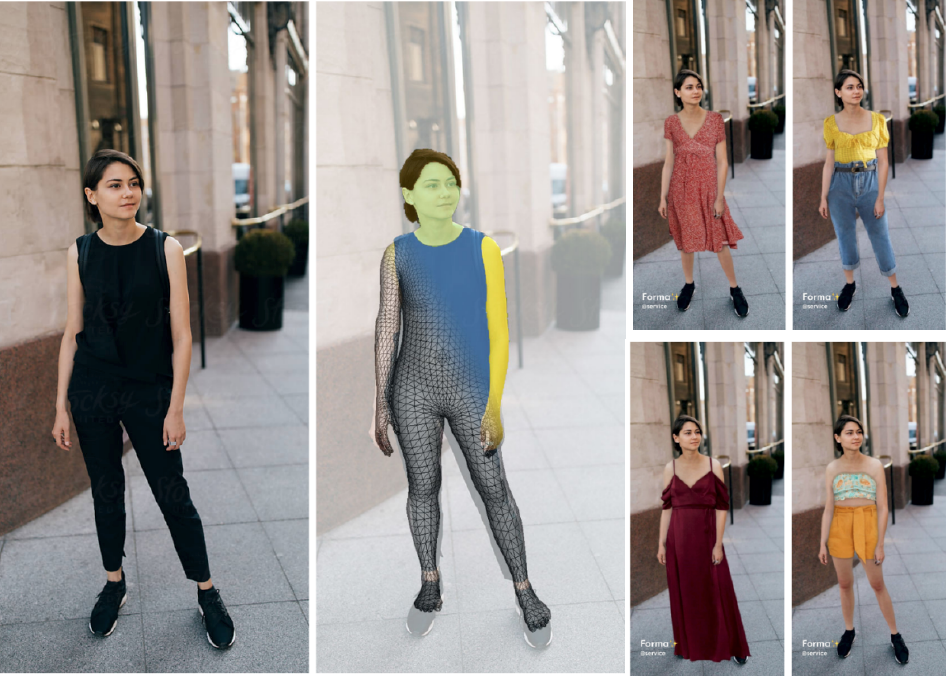 Source: Company website[/caption]
Source: Company website[/caption]
Forma also offers a digital dressing room for retailers to integrate into their own websites. The company is currently collaborating with hundreds of companies on its merchant integration offering, including bridal companies Amsale and Birdy Grey. Digital dressing rooms can provide purchase conversion lifts for apparel categories that are particularly difficult to try on, such as bridal dresses, swimsuits and men’s suits, or even categories that may not have “hanger appeal” but look better when seen on the body, such as slouchy sweaters, off-the-shoulder tops or fitted pants.
Forma reported that it is seeing a 5–50% lift in purchase conversion rates across all categories, and that customers who try on products are five to 10 times more likely to make a purchase than those who do not try items on. The highest conversion increases are being realized for items with challenging silhouettes to try on (swimsuits) and those for which the customer does not have a frame of reference for purchase (bridal gowns).
What We Think
Self-guided scanning and immersive product experiences that offer frictionless shopping will continue to gain popularity. In the post-crisis world, we expect that AR and VR are going to be significant in helping to remove barriers to purchase and making consumers feel more comfortable with shopping and more confident in their purchasing decisions.
Implications for Brands and Retailers
Brands and retailers could look into various ways to help consumers shop without friction in store, such as by doing the following:
- Continuing to invest in technology upgrades in brick-and-mortar stores, such as connecting QR codes to digital screens, to enable shoppers to view product details and visualization (e.g., in 3D format).
- Actively partnering with reality technology providers to enable consumers to experience products in an immersive way and help them to make purchasing decisions.
Implications for Technology Vendors
Technology vendors could help to provide technologies that enable consumers to enjoy frictionless shopping processes in store.
- Reality technology can be further developed to offer more realistic renderings of products—enabling consumers to better visualize and experience color and texture digitally. For instance, shoppers can view the wrinkles of clothing, if they try it on virtually.
- Vendors should facilitate the adoption of in-store technology such as digital screens by retailers—this type of technology offers shoppers immersive and self-guided experiences, which we expect to be popular post crisis.